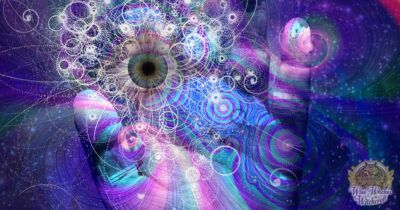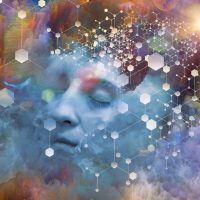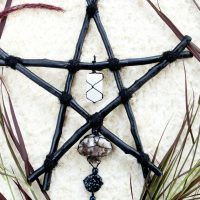Pagan Definition – What Is a Pagan and Pagan Religion
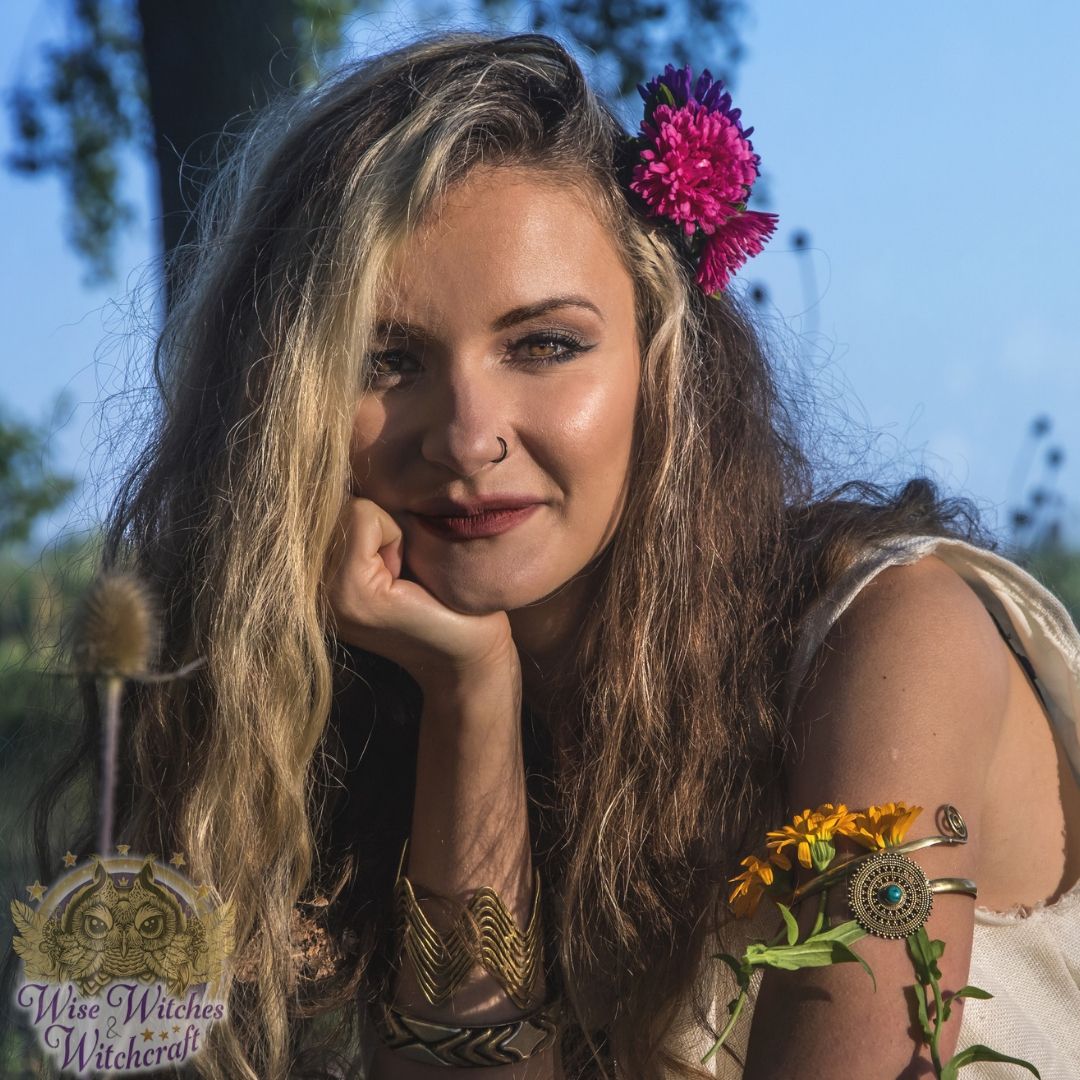
“We are not evil. We don’t harm or seduce people. We are not dangerous. We are ordinary people like you. We have families, jobs, hopes, and dreams. We are not a cult. This religion is not a joke. We are not what you think we are from looking at T.V. We are real. We laugh, we cry. We are serious. We have a sense of humor. You don’t have to be afraid of us. We don’t want to convert you. And please don’t try to convert us. Just give us the same right we give you–to live in peace. We are much more similar to you than you think.”
– Margot Adler
Define Pagan: It’s something that will require the exploration of diverse cultures and different points in history. Pagans, Wicca, witchcraft, and the Pagan Religion – examining the meaning of the latter concepts is a lot like falling down the rabbit hole leading to Wonderland! Why? Because there are multiple meanings depending on historical context, perspective, and word use! Here you’ll learn everything you could ever want to learn about Paganism, Witchcraft, and Wicca! If you are a new practitioner, there’s plenty to learn! In fact, you’ve jumped on the life-long learning bandwagon! So, whether you’re a new or adept practitioner with years of experience under your belt, there’s plenty of material here to explore.
Pagan Definition: What Is a Pagan and Pagan Religion Table of Contents
- Pagan Religion
- What Does Pagan Mean?
- What Does the Word Pagan Mean?
- What is Paganism?
- What It Means to Be Pagan
- What is a Pagan?
- What Do Pagans Believe In?
- What Does Neo-Pagan Mean?
- What Do Pagans Believe?
- Difference Between Wicca and Pagan
First, let me ask you a few questions! I promise it will help make things clear to you about what we’ll cover here as we explore paganism. Consider the following concepts. You might want to write them down in a journal. You can look at them again after reading the material here. It will let you see how your answers change, if at all!
Questions to Consider When Defining Paganism
- Have you ever thought about the real meaning of Wicca, Witchcraft, and similar terms?
- Have you ever sat down and asked yourself, “What does the word ‘Wicca’ mean?”
- Have you wondered “What is a pagan?”
- Do you know what you’re saying when you use these words in conversation or writing?
- Have you thought about why it is important for you to know what Wicca means at all?
- Why is it necessary to sort out one pagan definition from another?
As you’ll soon see, there’s more than one definition for pagan!
Pagan Religion
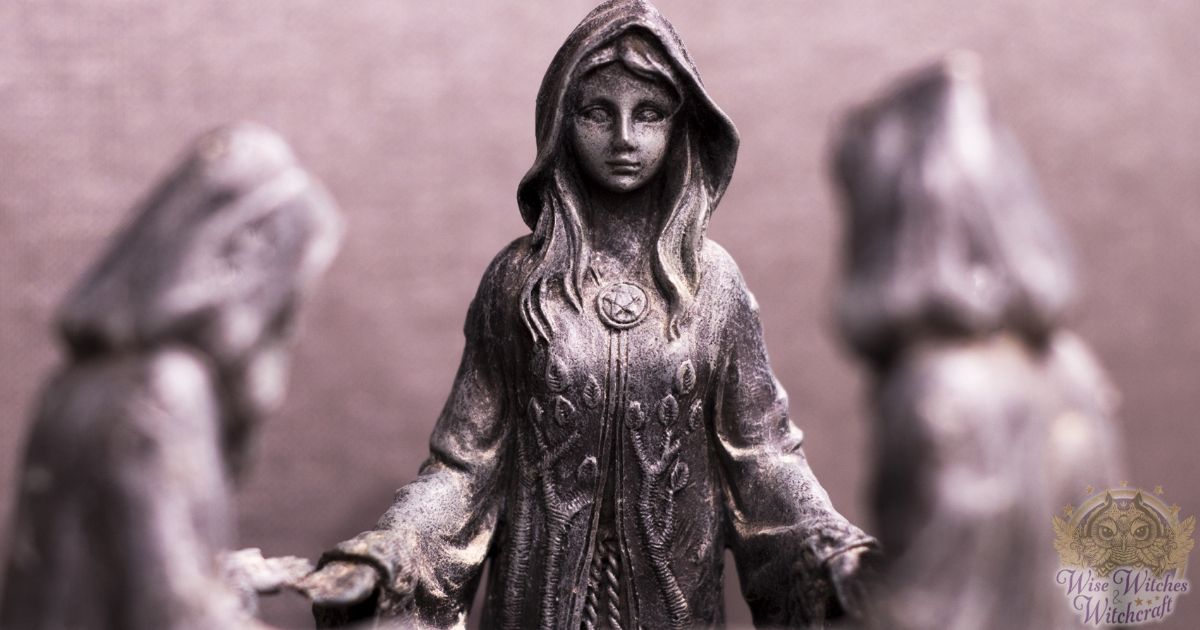
Now, as you begin to learn about Wicca and Paganism, you’ll run into a lot of terms and jargon. But, understanding the terms is important for so many reasons. The knowledge goes a long way in helping you develop a solid understanding of your belief system. Knowledge of the proper terminology promises you the ability to express your beliefs. It’s vital that you can convey your beliefs with conviction, certainty, and clarity.
Some of the terms relating to Wicca, Craft practices, and paganism are interchangeable. Then there are some references with extremely specific meanings. Again, understanding the interchangeability of terms is important for clarity of expression.
So, what kind of terms are we talking about? For starters, you’ll want to understand terminology corresponding with Witchcraft and paganism. Words like Wicca and Witchcraft have significant differences in meaning. But, they are also connected through context and selective usage. Words like pagan, paganism, and heathenism have a rich history.
[wisew_rectangle_large align=”left”]Watch and see how word meanings evolve over hundreds of years!
Did you know that all Wiccans are pagan? Okay, that one is easy! But, we must be careful! We CANNOT also say that all Pagans are Wiccan. Why? Because it would be an untrue statement!
Is that a pin I hear hitting the floor?
Not to worry, later we’ll explore what it means to be Wiccan. We’ll even examine how the self-descriptor pagan differs from Wicca. For now, let’s challenge your mind a little bit more! I’m bound, set, and determined to leave smoke pouring out of your ears by the time I finish!
We can go even further and say not all pagans are the same type of pagans. Yes, now your mind is reeling! If not, then consider the next few fun facts! Discovering there are Paleopagans, Mesopagans, and Neo-pagans will surprise you. Guess what? There’s even a descriptor for Crypto-pagans too!
Where Do All These Word Meanings Come from Anyway?
It’s all too easy to claim to be Wiccan and pagan while assuming the meaning behind the words. It’s simple to assume others know the meaning behind our self-descriptors too. But, the minute we begin to explore the definitions of Wicca and paganism, we begin to see the thorny problem.
What Does Pagan Mean?
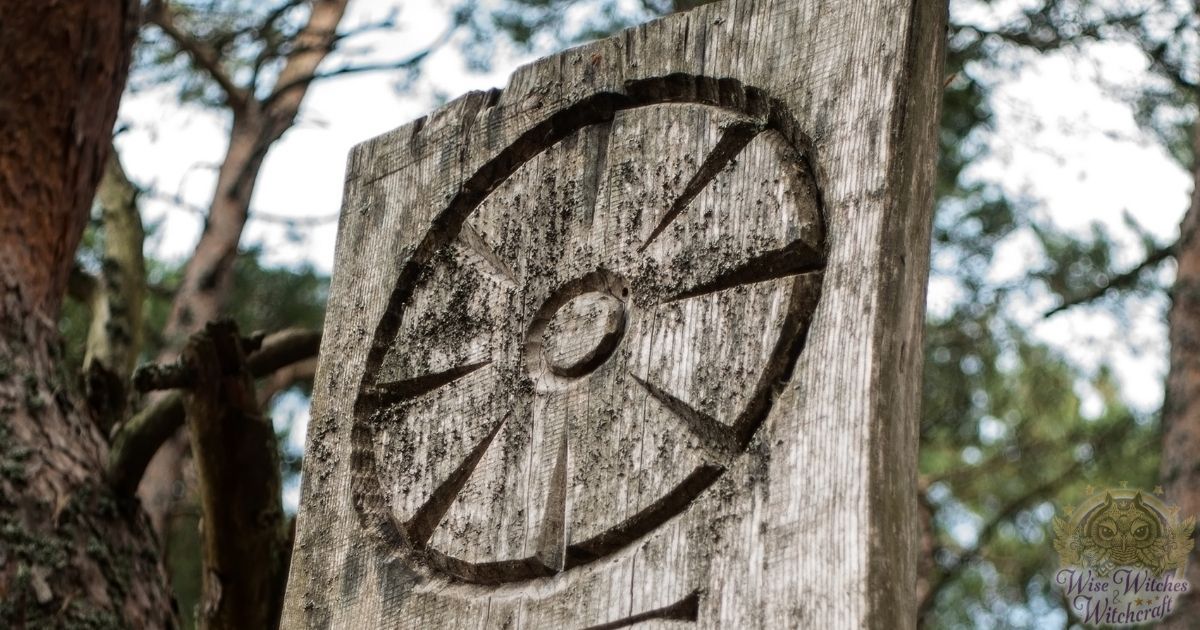
What’s the big issue? It’s trying to pin down a single meaning for a pagan definition. Many meanings lend to confusion. When communicating with others who know little about paganism, clarity is necessary. Let’s consider the word pagan for a minute. The term has several different meanings. But, what affects the meaning of a term?
- The definition of a word changes in relation to historical use.
- The context in which you use a word shapes the term’s definition.
- Worldviews and personal perspectives alter word meaning.
- Religious understandings have an influence on language.
- Sometimes erroneous references change and tarnish the understanding of a word’s meaning.
- Cultural changes and understandings shape the meaning of words and language.
- Symbolism can add meaning to terms thereby giving the jargon a multifaceted definition.
[wisew_rectangle_large align=”right”]Now we will explore the meaning of some of the common lingo you’ll encounter during your studies. It will empower you with a keener understanding of a pagan definition. You’ll get a taste of some historical context. But you’ll also gain clarity into how the terms describe the practices of pagans and Wiccans in a modern sense. Examining word meaning will also allow you to examine different points of view. You’ll even see how meaning evolves over time.
So, what does pagan mean anyway? Pagan is an umbrella definition including more than Wiccan practices. But, what else does it mean? When looking to answer the question, what does pagan mean, we need to look at some history.
Things become thorny because historians do not agree on a single pagan definition. The terms pagan and paganism are what Bryan A. Garner writes about in Garner’s Modern American Usage. He calls the words “skunk terms.” Garner coins the phrase to define words with extreme controversy surrounding their usage.
In other words, no matter what definition you focus on, someone will “raise a stink about it.” One person will favor traditional usage, and the other person favors newer meaning. With many arguments for a pagan definition, we’ll examine all possible understandings.
What Does the Word Pagan Mean?
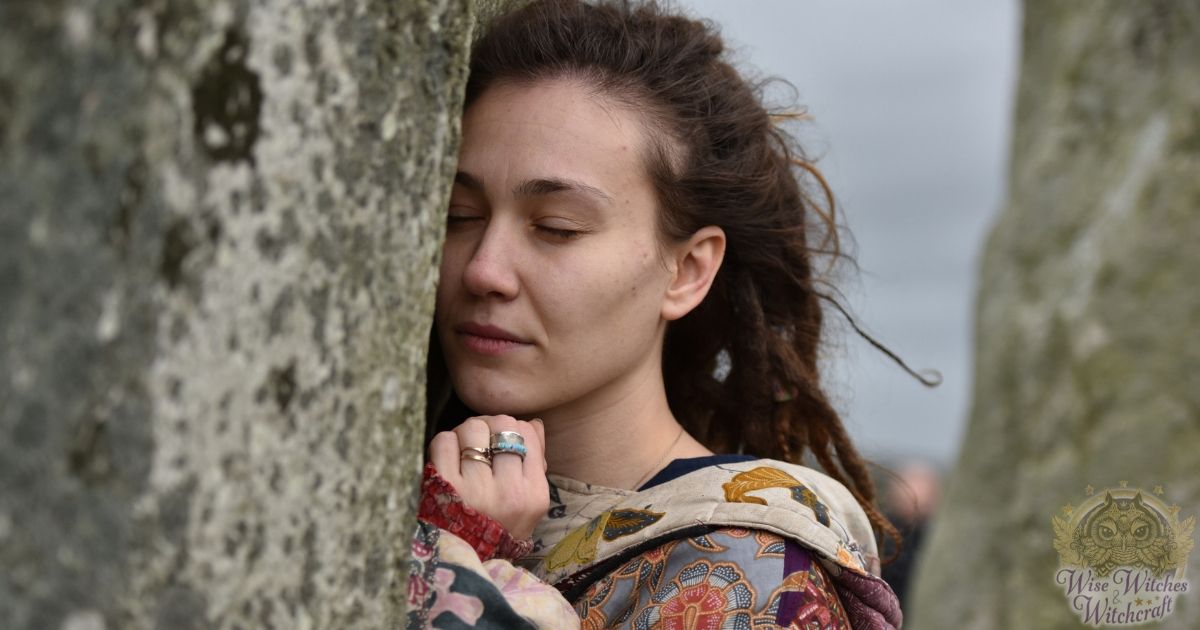
Since the earliest history of the word pagan is ambiguous, we’ll have to examine all origin-related theories. It allows for a thorough exploration of word meaning. We’ll begin with a historical look at the word pagan.
Our exploration for a pagan definition brings us right to the 4th century BCE. It was still a time before the full rise of Christianity as a dominant religion. The setting is the Roman Empire. It is a time when many people were still revering the Gods and Goddesses of old. Revering more than a single deity is the practice of polytheism.
[wisew_rectangle_large align=”left”]Some polytheistic folks had not converted to the Christian faith yet. The failure to convert means they did not worship the Christian God. Christianity is a monotheistic practice. Its followers believe there is only one true God.
Now, let’s return to the Roman Empire setting once more for an understanding of what is a pagan. Those who continued to worship many deities lived beyond the towns. Christianity was fast becoming the dominant belief system in the towns. Distance allows for lingering polytheistic beliefs. (Those pagans are unreachable!)
Instead, they lived in rural areas more difficult to reach by proselytizers. What is a proselytizer? Someone who seeks to convert another person to their religious belief system.
A Small Pit Stop: Polytheism vs. Monotheism
Herein is where the rabbit hole goes deeper still.
Many Judeo-Christians believe in a holy trinity of the Father, Son, and Holy Ghost or Holy Spirit. But, Christianity is still monotheistic. Now that we understand the word polytheism, it might seem more applicable. Still, that’s not the case. Here’s a little tidbit to confuse you further.
[wisew_rectangle_large align=”right”]As we explore modern-day pagan concepts, you’ll see some pagans revere several deities. Yet, they still see the Divine with a monotheistic understanding! (Does your brain feel like Jell-O yet?)
Of course, there are those folks who “converted” to Christianity in a superficial sense too. Christianity was taking many pagan practices and integrating them into Christian practices. One means of doing this was building Christian sacred sites on top of older pagan locations. Another means of domination was in merging deities and mythology with Christian teachings.
The act of merging two opposing religious belief systems is syncretism. The merging of beliefs demonstrates religious domination. But, it also made converting polytheistic people an easier task. Of course, the conversion was not a complete change for the individual. They could attend church while still honoring the deities of old. No one is the wiser.
What is Paganism?
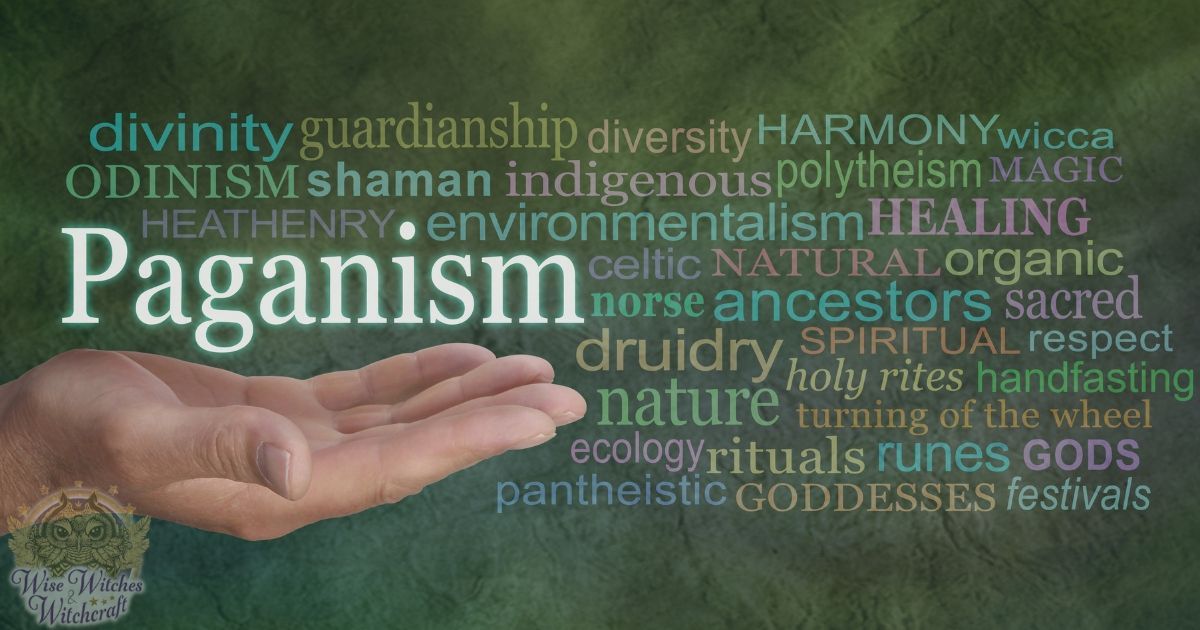
Now, here’s your average Joe! In the early Roman Empire, the word paganus was already changing. People were not condescendingly using the word. The first time the word “pagan” was in use, it was a term the Roman Army used. It is a word stemming from the Latin word paganus meaning “civilian, rustic, and rural.”
The word paganus evolves. It references those who are not Christian soldiers. There is some evidence the term paganus means “bumpkin or yokel.” Other sources suggest a meaning of “villager or country dweller.” Another argument suggests the word retains the meaning of “outsider.” Again, the term is not derogatory in its use. Already we can see the answer to “what is a pagan” proves confusing.
What It Means to Be Pagan
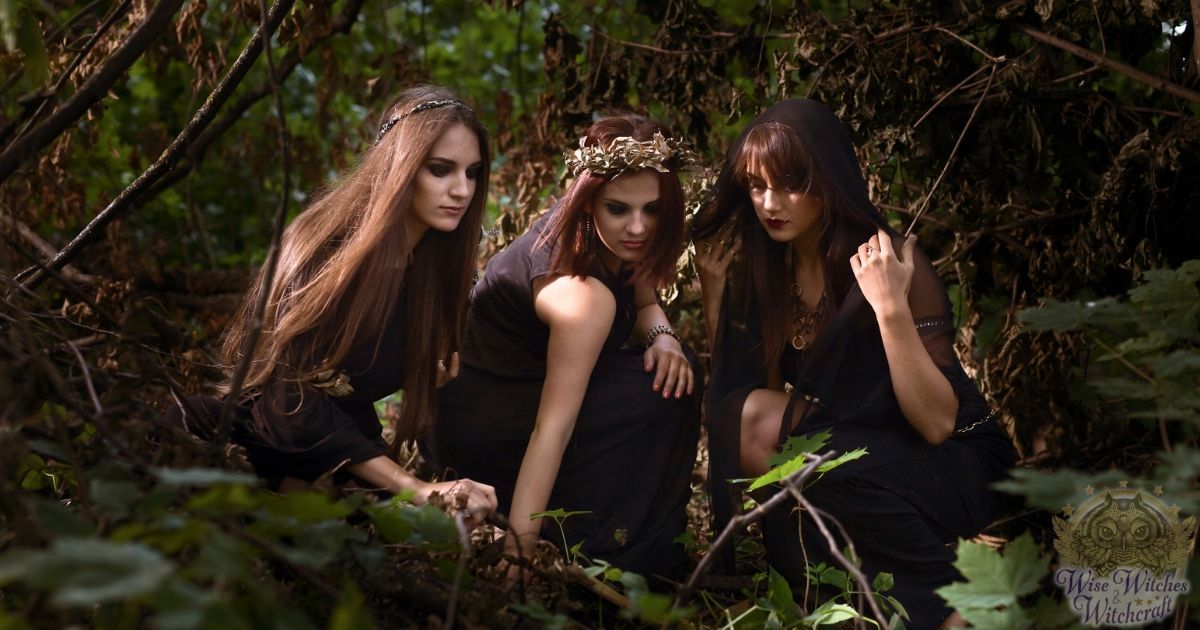
The meaning of pagan suggests the idea of “you are not one of us. “Bear in mind there is always some overlap in the meaning of a word pagan. By the 4th century and into the beginning of the fifth century BCE, there were many meanings. Sometimes the word pagani also appears. People don’t stop using a word as one reference only to exchange it for another. A word’s usage becomes archaic as time passes: It “falls” out of use.
At this point, the word paganus was a reference to anyone who was not a soldier in the army. It was also a term describing a soldier who has no skills or someone unwilling or unable to engage in combat.
[wisew_rectangle_large align=”left”]The word paganus also appears in some of the writings of Saint Sidonius Apollinarius. The saint is also known as Gaius Sollius Modestus Apollinaris Sidonius.
“Aren’t you happy you didn’t have to learn to spell that name in kindergarten? Of course, with many appearances of the letters “S” and “L,” it’s a name that makes for an exquisite Wheel of Fortune round. Hey, anyone up for a killer game of Scrabble?)!
But, I digress…The saint calls his writing as “rustic and simplistic” or paganus simplicitas. The irony here is outrageous! Especially since writing his name was anything BUT “paganus simplicitas.”
Before the fifth century, other words were in use for referencing non-Christians. Words like “gentes” and “gentiles” were common. The word “nationes” meaning “nations” was also in use. “Hellenes” is another word in use at the time. The word was for separating non-Christian Greeks from Christians. “Ethnicis” and “infideles” were words less often in use but were also hosting the most derogatory tones. In the early fifth century BCE, the words “paganus” and “pagani” meant non-Christians. The upper-class were using such references.
“Paganus” and “pagani” were terms often used by common folk as slang. St. Augustine made “pagani” popular. He links the word to the Gentiles or non-believers. The word “pagani” appears in his sermons. But, he stays away from using the word “paganus” whenever attempting to convert.
It is here that some scholars argue “paganus” appears to take on a negative or derogatory tone for the first time. Other scholars suggest we cannot assume “paganus” or “pagani”had a negative meaning. We can only assume so if the word appears in context.
As we continue to define pagan, we see the word takes on a negative meaning. This negative connotation is indisputable. Often, people would use the word to imply that someone was worshipping Satan. The term pagan becomes a weapon. People use it to define others as evil. This is because they are not conforming to Christian practices. Even in modern day usage, some people mistake the meaning of pagan as suggestive of evil.
[wisew_rectangle_large align=”right”]When we attempt to define pagan, we also realize many words relating to Wicca and the craft are skunk terms. We can begin to recognize how thorny it is to define the terminology in relation to Witchcraft. There are many terms people associate with evil, sinister acts, and Satanism. These words, despite many meanings, sometimes cannot escape the negative connotations people assume. Consider the following word examples and the many meanings they imply:
- Coven: Sometimes people confuse the meaning of coven for covenant.
- Cult:There are many meanings of “cult.” One archaic sense is a group worshipping a specific deity. Today, many hear the word “cult” and have instant visions of mind control.
- Left-handed path:This phrase defines pagan practices. But, it is something people view as bad. Why? Because it is the opposite of being on the “right hand side of God” or being “right with” the Christian God. The association of the right side with God is in several Biblical references, wherein the “right hand [of God] is full of righteousness.” But, the most popular inference is Mark 16:19, when referring to “The Ascension of Christ into Heaven:” “After the Lord had spoken to them, He was received up into heaven and sat at the right hand of God.”
- Magick: Those who are not pagan or who do not practice the occult might not know Magick is a term for occult work. They might see the word as a misspelling. The “k” is intentional. For more information about the origin of the spelling of magick with a “k,” and how the terms “magic” and “magick” are exquisitely different in meaning, check out the article “Magic or Magick: What’s in a K?” here on Wise Witches and Witchcraft!
- Neopagans: Pagans may dispute whether the term neopagan applies to their beliefs.
- Occult: Some associate occult practices with evil. Occult means “hidden,” and relates to the use of real magick.
- Wicca and Wiccan: Sometimes these words are misheard or misunderstood as “wicked.” Those who do not understand witchcraft might consider Wiccan practices as idolatry.
- Witch: A witch is someone who works magick for the purposes of energy manipulation. A witch is a male or female seeking to make change on the physical plane. The goal is to gain the slightest of edges of luck, safety, and satisfaction in the material and/or emotional and psychological realms. The term Witch is something people sometimes confuse with fairy tale imagery. They can also make erroneous assumptions about craft practitioners because of the incorrect presentation of pagans, witches, and Wiccans in the media.
[wisew_rectangle_large align=”left”]To call oneself a witch in a public forum or setting is a big decision. Some people don’t understand the decision to call oneself a witch. Others might ridicule or mock the person as well. These factors a practitioner considers when coming out of the broom closet.
Not all Witches are Wiccan. There are differing beliefs among Wiccans and other witches. Many witches do not practice a religion. Then some Satanists call themselves witches. There’s no connection between Satanists and Wiccans.
Wiccan Witches can be male or female. The term “witch” still applies. Some people confuse the word warlock with the word witch. I guarantee calling a Wiccan Witch a warlock will earn you at least a glaring look, if not a stern correction or even a serious tongue lashing! Why? Because the term warlock has negative connotations. It means “oath breaker.”
- Witchcraft: People see this term and often think black magick right off the bat! (Pardon the pun!) In fact, if you look at some basic definitions online, you’ll see the reference to the black arts. What such limited definitions do not supply is the fact that magick is neutral. It is not black. It is not white. The person practicing witchcraft determines the type of magick in use. The intention of the witch makes magick something that’s good or bad
- We take on the word “witch” as a self-descriptor and do so with courage. It is the act of reclaiming the word and stripping it of its negative connotations little by little. The word witchcraft is an instant conjurer of fairy tale images too. Visions of a hideous old woman living in the woods and eating bad children might come to mind. Visions of witches flying on a broom or gathering in the dark of night to collude with the Devil are other “erroneous” perceptions of witches and the Craft.
- There are many negative connotations attached to the word “witch.” Thus, when a modern-day practitioner reclaims the word, it’s confusing. It might earn them a few jaw-dropping stares. It’s not that the person believes in such images as real. (If they do, you’ve got an even bigger problem on your hands). They wonder how a practitioner identifies as a witch. This is because the only know the evil connotations the word evokes.
- Another mistake people make when thinking of witchcraft relates to Salem Village, Massachusetts. In 1692, 20 people died because of witchcraft accusations. Not even one of them were witches. They didn’t practice magick at all. The only person who may have had knowledge of witchcraft was a slave Tituba who was a native of Barbados.
[wisew_rectangle_large align=”right”]
By the way, the poor victims of this atrocity were not burned at the stake. No person ever accused of witchcraft in the United States got burned alive. Rather, 19 victims hanged. The remaining victim out of 20 was pressed to death with rocks.
What is a Pagan?
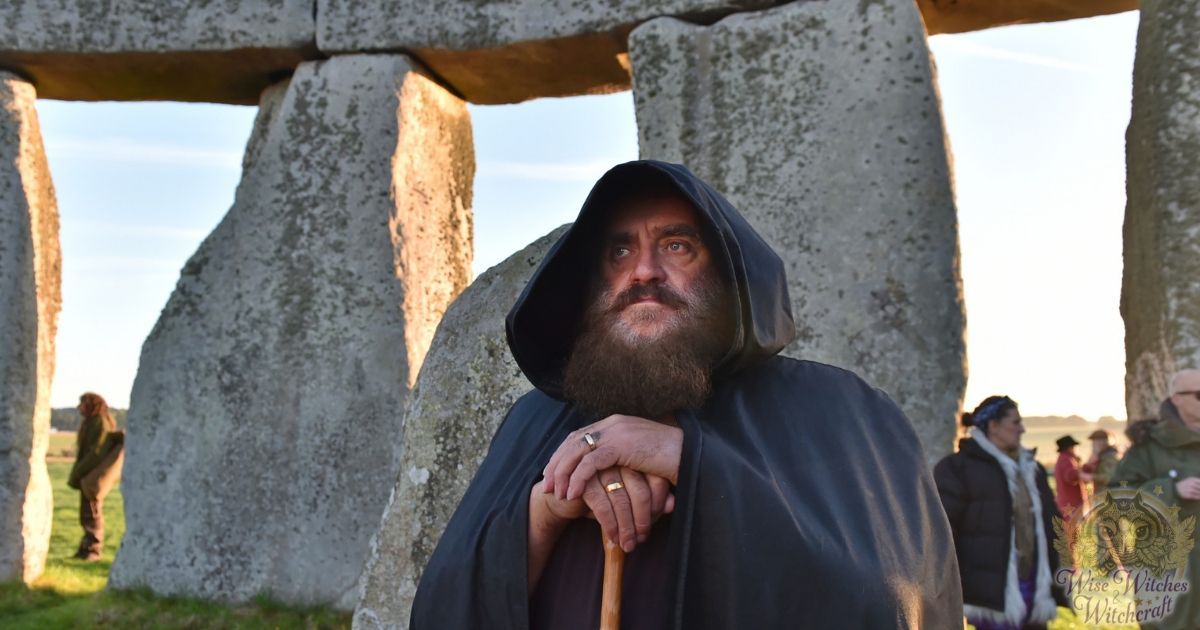
Modern-day witchcraft has different types of practitioners. Among witches are unique views on magick and its practices. Some practices stem from ancient sources. There are many traditions of witchcraft, each shading and influencing the belief system.
By the 19th century, the pagan definition is in use by those who were artistic and members of fringe groups. The claim allows for ancient world inspiration. About a hundred years later, it describes practitioners in the neopagan and modern pagan movements.
Today, the meaning of what is a pagan and paganism also describes non-Judeo-Christians. Pagans are those who are still outsiders in this sense. They may worship nature or partake of polytheistic practices. But they do not conform to Christian doctrine.
It is unfortunate some negative connotations assigned to the pagan definition still survive. The person who decides to use the reference pagan to describe themselves needs to take heed. In some instances, clarity and an explanation of meaning might prove necessary. Care is necessary when communicating with someone about faith. Miscommunication arises when the individual assumes an erroneous understanding of the word pagan.
As it is when we define pagan, explaining a definition of paganism is problematic. After an examination of a pagan definition, it is easier expressing word meaning.
[wisew_rectangle_large align=”left”]So, what is paganism? It is the practice of following any non-Christian religion.
Bear in mind there have been groups in the past that consider Christians pagans though.
Wait, what?
That’s right! Some Jewish groups consider Christianity as polytheistic despite its monotheistic association. How can they make such an accusation? The holy trinity suggests three deities, even though these three deities are part of one God. Some people also argue Christianity has pagan influences.
Yes, that’s a lot of different religions falling under the umbrella term of paganism. Still, the modern-day definition of paganism is a bit narrower. Pagan practices often involve the worship of nature. Paganism involves Earth-based religions. Now, it’s hard to separate the meaning of what is pagan from the exploration of what pagans believe. So, without further ado, let’s check out some of the many unique views of those who are self-described pagans.
What Do Pagans Believe In?

The views of the practitioner include animalistic, pantheistic, or polytheistic views. Let’s touch on the meaning of these words so we can have a full understanding of the answer to what is paganism? Please understand it is impossible to touch on every single pagan belief. Why? Because of the diversity of pagan religions.
- Animalistic: The reverence, worshipping, honoring and protection of animals.
- Pantheistic: The religious belief that the Universe is the Divine.
- Polytheistic: The belief in more than a single deity.
So, further down the rabbit hole we’ll go, Alice! Let’s dig deeper into the question, “what paganism is?” Some pagans are polytheistic. But, there are some who are monotheistic. How can this be?
It boils down to the pagan who understands the Divine as many Gods vs. the pagan who doesn’t embrace other deities. Still, these understandings are about the same Divine source. In pagan belief systems, “All Gods Are One God. All Goddesses Are One Goddess.”
[wisew_rectangle_large align=”right”]In other words, one pagan might connect with the Divine through many Gods and Goddesses. In doing so, it is a clear and unmistakable polytheistic connection. For another pagan, connection with the Divine involves embracing masculine and feminine energies. The energies one envisions are part of a single deity or the consciousness of the Universe.
Modern pagans have belief systems that draw understandings from several resources. These resources include, but are not limited to:
- Archeological findings.
- Literature and academic research.
- Anthropological studies and records.
- History, ancient historians and both fiction and non-fiction writings.
- Classical antiquity.
- The beliefs of those following pagan religions during Premodern Europe.
Definition of Pagan and Types of Paganism
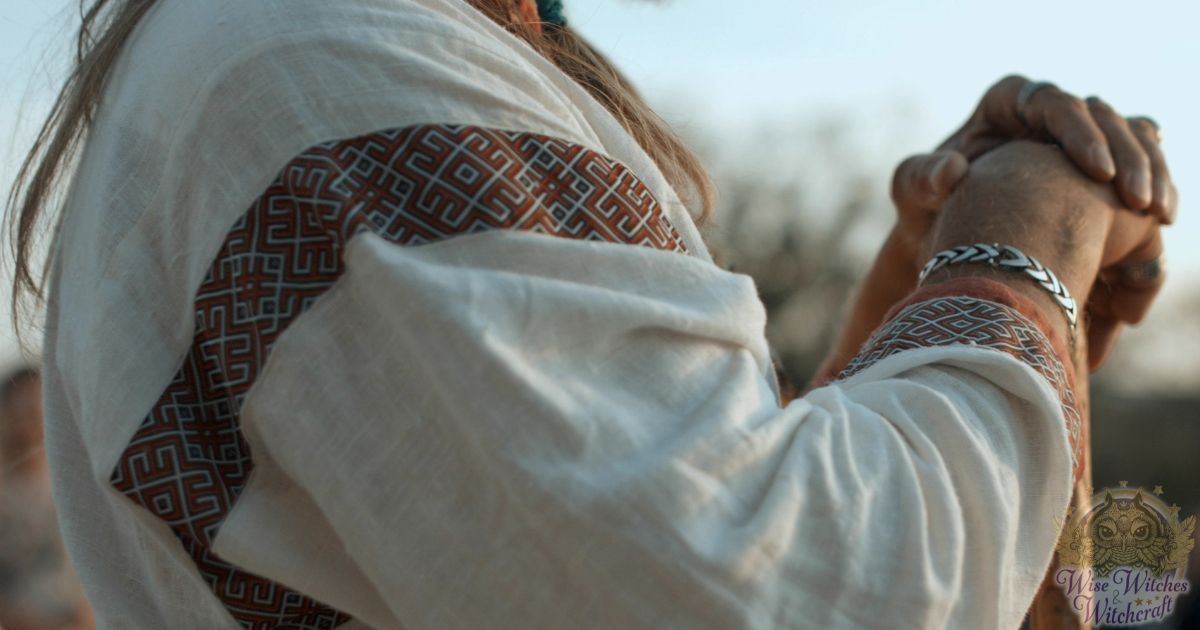
Remember earlier how we said all Wiccans are Pagan, but not all Pagans are Wiccan? Well, there are different types of pagans too. We can’t put all pagans under a single umbrella definition without at least offering some categorization. Doing so lends a bit more clarity to the understanding of what it is to be a pagan. It also helps clarify the great diversity of pagan beliefs and practices. So, what are the different types of pagans?
- Paleopagans: This term emerges in language after the word neopaganism. It differentiates between modern pagans today and those who lived in ancient times. Under this category, there are those who practice nature-based, polytheistic practices. The term references people in ANCIENT CULTURES ONLY. This includes Celtic polytheistic practices and Germanic paganism. It includes those of polytheistic faiths during the pre-Hellenistic era in ancient Greece. It also includes those in a pre-imperial era in ancient Rome.
- Mesopagans: This is a group of pagans who have independent religious practices. But, there’s some influence from non-theistic, dualistic, or monotheistic religions. Under this category, one can include the Espiritu religion, Santeria, and Haitian Voudou. Afro-Diasporic religions and other forms of spiritualism also apply. The term Mesopaganism embraces New Age spirituality, Norse Paganism, and Australian aborigines. The faith of aboriginal Americans is also part of the Mesopagans grouping. This includes the pre-Columbian Americans and Native Americans. British Traditional Wicca falls under this category according to Isaac Bonewits. Isaac is an American Druid who authored a lot of material on neopaganism and the occult. He passed away in August 2010.
- Crypto-pagans: This group of pagans keeps their faith hidden. Some pagans hide the fact they are pagan while appearing to adhere to an Abrahamic faith. Others show no adherence to any religious system. At the same time, they insist on keeping the pagan faith private. The word Crypto-pagan stems from kryptos which is Greek for secret or hidden. Wiccans and other witches might refer to this as being “in the broom closet.”
Why would a modern-day pagan feel the need to hide or keep their religion private?
- Privacy and preference.
- Fear people will not understand.
- Fear of judgment.
- Fear of rejection or ridicule.
- Fear of bigotry and bias.
- Perceived societal dangers whether real or imagined.
- Locality: The pagan lives in a region where the dominant religion is Christianity or another faith where the large portion of the community perceives paganism is taboo. Or, if the pagan lives near people with a conservative, extreme worldview, pagans may refrain from announcing their religious preferences. It is an effort to prevent ostracization.
- Adhering to tradition and/or coven law: Some practitioners may follow a tradition instructing to hide their views and practices.
Pagan Definition Word Trivia Fun!
(Here’s a bit of word trivia for you, as if the entire exploration of pagan and paganism hasn’t blown your mind!) The word Paleopagans is a retronym. It is terminology created to describe and differentiate something else.
[wisew_rectangle_large align=”left”]So, did we cover all types of paganism? Of course not! But, now we can mix up the puzzle for you even more! See if you can keep up!
All Wiccans are pagan, but not all pagans are Wiccan.
All Witches are pagan, but not all Pagans are Witches.
Some Wiccans might call themselves neopagans. But not all Wiccans do.
Some Wiccans consider themselves Mesopagans, but not all Wiccans do.
According to some Wiccans, their beliefs and practices stem back to the Paleopagans. But, not all Wiccans will make that argument.
Some Wiccans are Cyrptopagans. Some Wiccans are not!
Some pagans are Mesopagans, some are Neopagans, and some are Cyrptopagans. But, in the original definitions of Paleopagans, no modern-day pagans are Paleopagans!
Whew! Are you smelling smoke yet? No! Onward down the rabbit hole Alice!
We did not detail every single kind of pagan. Although we have made a brief mention of another pagan category. Can you guess which one? This leads us to the next question! Today, modern pagans fall under the controversial term neopaganism. What does neo-pagan mean? Even better, why is it a controversial term?
What Does Neo-Pagan Mean?
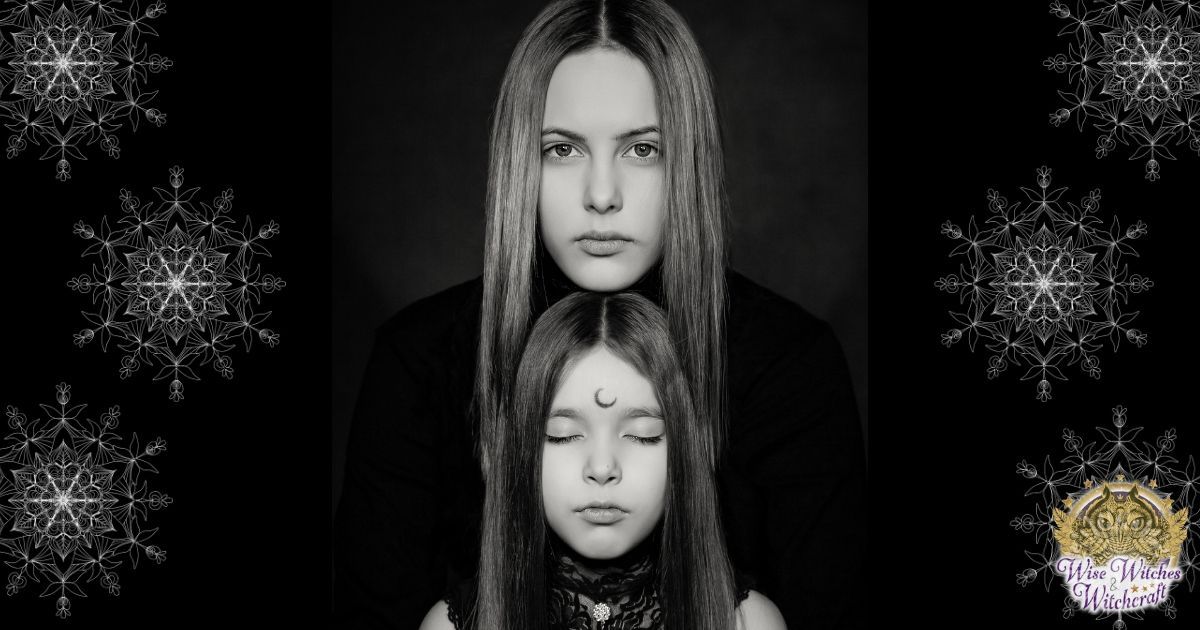
To answer the question “what does Neo-Pagan mean,” we should look to the etymology of the word first. The term references a member of a modern religious movement who holds beliefs outside old religions. Neopagans often embrace nature worship. Part of our work is already done. We already know a pagan is someone who practices nature worship. They also have polytheistic views. Now, let’s examine “neo” and its meaning. “Neo” means “recent or new,” thereby suggesting the revival of old ways.
Some pagans have no problem embracing the idea that their religion is a revival. Other pagans have no problem with the assertion they have beliefs stemming from ancient practices. But, there are those who do not care for the term neopagan, or for that matter, New Age either. Why?
The terms “neo” suggest a break from ancient pagan practices to modern day. Some pagans prefer to believe their practices have survived centuries. Whether they believe they take part in an oral or secret tradition makes no difference. To some people, the terms “neo” and “new” come across as insulting. Some pagans insist on a strong and unbroken line to ancient religious orientations.
Neopaganism and modern paganism are interchangeable terms. The definition is an umbrella term covering all reconstructionist religious belief systems. Examples of such include the faith systems below. Please know there is no way this list is all-inclusive. The systems here are a good taste of neopaganism and its diversity.
[wisew_rectangle_large align=”right”]Celtic Reconstructionist Paganism: A modern-day practice drawing from the reconstruction of Celtic Paleopaganism. Celtic Reconstructionist Paganism is a form of neopaganism-based on historical accounts of Celtic practices. This differs from the eclectic practices of Neo-druidism. The Neo-druidic practices do not put such a focus on historical accuracy. This pagan faith was born in the mid-80s. Neo-druidism also falls under the neopagan categorization.
Discordianism: Despite its beginnings as a parody religion, Discordianism is a valid faith. That’s right, it began as a parody religion or something to mock religious beliefs. The text challenges others and their religious convictions using satire and humor. But, some view Discordianism as a serious practice.
The system has a basis in the book The Principia Discordia. The Goddess of Chaos, Eris, is the main deity of worship. The second is Her sister Aneris or Harmonia. She is the Goddess of Order and Non-Being. Spirituality is the brother of these two Sister Deities. This system has three main principles:
- Order (Aneristic Principle)
- Disorder (Eristic Principle)
- Illusion (Both order and disorder are illusions).
If a person rejects the principles above, then he or she cannot perceive true reality.
-
Heathenry: Germanic Neopaganism stems from the ancient Germanic faith. This practice is stemming from the Iron Age as well as the earliest years of Medieval Europe. Folklore, archaeological findings, and historical accounts shape the modern faith. It is polytheistic with a focus on Gods and Goddesses from the pre-Christian era. The pantheon includes Freyja, Frigg, Thor, Odin, and Týr from Scandinavian folklore. It also includes Anglo-Saxon deities such as Ēostre, Thunor, and Wōden, among others.
Hellenism: Hellenic Polytheism or Hellenic Paganism is sometimes called Olympianism or Dodekatheism. It involves the modern-day worship and reverence of the Greek Olympians. The religion draws from ancient Greek practices and was born in the 1990s.
[wisew_rectangle_large align=”left”]Deities include Zeus, Hades, Poseidon who are three brothers. They rule the Sky, the Underworld, and the Oceans. Hera is Zeus’ wife. Zeus’ Demeter and her daughter Persephone are sometimes part of the twelve. Other deities include Dionysus, Hestia, Hermes, Hephaestus, Aphrodite, Ares, Artemis, Apollo, and Athena. Whoa, wait! That’s way more than 12 Gods, right? Right! The practitioner decides which deities they include within the 12 deities and may even choose to work with more. Here, one sees a bit of eclectic practices coming to the fore.
Neo-Druidism: The practitioners of Neo-Druidism tend to refer to themselves as Druids. It is a form of paganism involving the worship of nature. Druids respect all nature and are often active environmentalists. Some Druidry does not include a religious aspect. Differentiating between philosophies, ideologies, and faith-based practices is essential. Those practices that are not faith-based DO NOT apply to Neopaganism.
Druidry originates from 18th century Britain. It’s the 19th century where a religious aspect stems. In neopagan practices, Druidism sometimes involves reverence of ancestors. Honoring of fae folk, and/or animals is part of the faith too. Neo-druidism shifts from monotheistic in the 18th century to polytheistic in the 20th. Many druids are polytheistic and worship ancient Celtic deities. The Goddess Danu and the Tuatha Dé Danann are among such deities.
Roman Polytheistic Reconstructionism: A neopagan religion also called Relgio Romana or “Roman Religion.” The faith is sometimes called Care of the Gods or “Cultus Deorum Romanorum.” In Italian, the Romana agli dei meaning “Roman Way of the Gods,” is another reference. The Spanish version is Camino romano a los dioses.
Nova Roma is the biggest organization of its kind. It reconstructs ancient pagan practices from the Roman times. Nova Roma is active in Eastern Europe, Hungary, and Russia. It is also active in Ukraine, Central Europe, Canada, and the United States.
Slavic Native Beliefs: This is a system known as Slavic Neopaganism and Rodnovery. The Slavic Native is a neopagan movement. It draws from ancient Slavic folklore and myth. The Slavic beliefs stem from Eastern and Central Europe. Rodnovery is a description adherents use. The system is both polytheistic and pantheistic. Thus, it has many Gods and a single Supreme deity as well.
Wicca: A faith incorporating elements of Witchcraft. (Although not all practitioners practice spellcasting or other forms of magick). It is sometimes called pagan witchcraft. Despite the arguments the faith draws back to ancient times, it is a newer religion. Gerald Gardner introduces the faith in the mid-1950s. The practice includes rituals along with a theological framework. It has hermetic motifs stemming from the 20th century. The structure of the faith is diverse. Many traditions are shaping and influencing the practices of the faith.
What Do Pagans Believe?
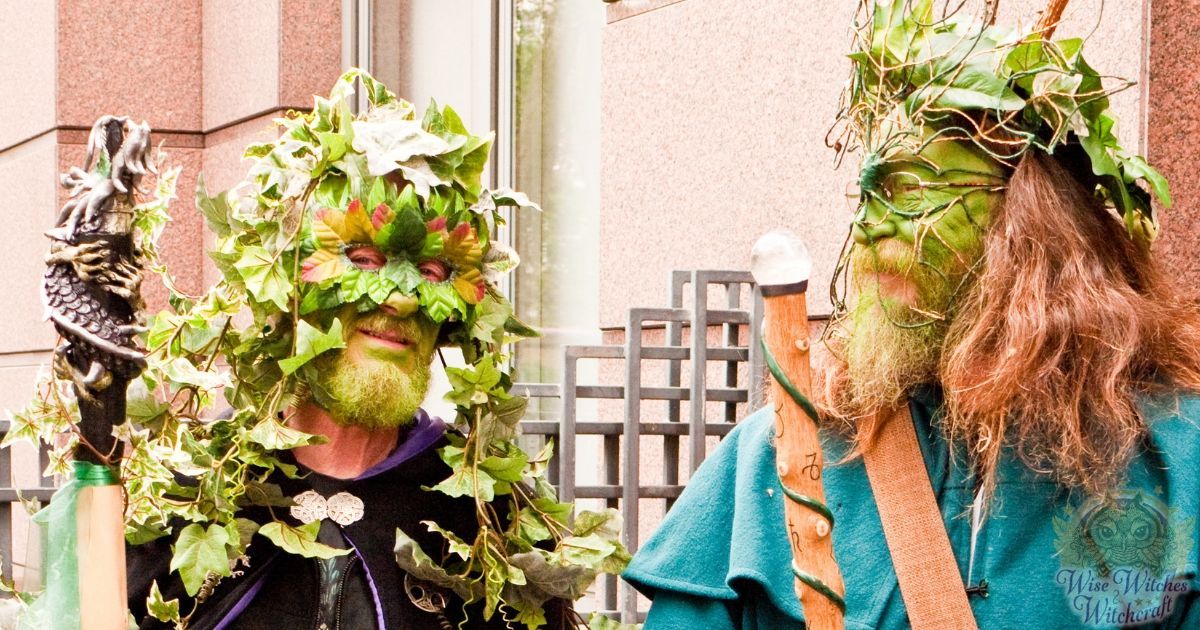
Of course, parts of the answer to the question “what do pagans believe,” appear in the information we’ve covered thus far. Here, if possible, we will expand upon such concepts. You’ll find pagans have diverse beliefs. We also learn the term pagan makes a broad umbrella term covering a wide range of faiths and beliefs. In fact, when checking into different worldviews, surprises await! Let’s explore some essential pagan beliefs now.
Animism: Some pagans believe in animism. The word originates from anima which is Latin for “life, spirit, and breath.” Animism is a belief that all things have an essence or spirit. The belief includes places, inanimate objects, and animals. To have animistic beliefs is to see all things living. Examples include rivers, rocks, trees, and people. It includes animal worship and the view of the earth as a living, animated being. With an animistic belief system, there’s no distinction between material and spiritual realms.
[wisew_rectangle_large align=”right”]Autotheism: Some pagans believe they can reach Godhood. They also believe the Divine resides within us. This is akin to the Hermetic truism “As above, so below, as within, so without.”
Cartesian dualism: This is a belief in the separation of body and mental functions. It is a belief suggesting metal processes can exist beyond and outside of a physical body. It is a form of substance dualism explaining the soul is separate from the body and the physical plane. It suggests a soul can occupy the physical plane. It also suggests the soul is immortal and separate from the physical vessel.
Dystheism: Some pagans may not view a deity as all good or evil, but a bit of both. This is true of trickster Gods in myths throughout the world. This allows pagans to believe in a balance between good and evil, for without one there cannot be the other. It is a means of exploring what religious scholars call “the problem of evil.” The latter question arises when one considers an all-benevolent God exists. If this is the case, then how can the all benevolent allow for evil’s existence. In Dystheism, the deity is both good and evil because both are necessary for balance. It’s important to note the problem of evil is not only a concept Christians study. The same problem is prevalent in polytheistic religions.
Henotheism: This practice means the person worships one deity. But, it doesn’t mean the practitioner denies or refutes that other deities exist. The word stems from “henos theos” which is Latin for “One God.” For instance, in the Indian faiths, such as Hinduism, the unitary divine essence is one God. But, this one God is something they see as all the other deities creating the one God.
Metaphysical Naturalism: A worldview called scientific materialism, philosophical naturalism, or ontological naturalism. This pagan perspective frowns upon the supernatural or preternatural aspects of religion. It is a viewpoint some call “paganism without the woo-woo.”
Monotheism: At first glance, monotheistic beliefs don’t fit the definition of pagan. But, there are those with pantheistic beliefs which prove monotheistic and pagan. In other words, the person acknowledges many Gods as one God. This differs from henotheism, where the person acknowledges many Gods but worships one.
[wisew_rectangle_large align=”left”]Native American Religions: The faith systems consist of animistic, henotheistic, and polytheistic beliefs. In some cases, the individual has monotheistic views as well. Ceremonial practices are diverse and vary depending upon band, clan, or tribe. The history is one that is often oral, and people pass down stories through the generations.
Naturalistic Pantheism: In this view, the Divine is what makes up the Universe. The Divine relates to determinism and concrete things. Pan stems from Greek. It means “all.” Theos is also Greek and means “God. The individual believes the Universe is God and there are no other beings. One form of naturalistic pantheism is Taoism. The belief system focus is on unity and Nature’s operations being spontaneous. Baruch Spinoza believed Deus sive natura which is a phrase meaning “Nature or God.” Spinoza plays a big role in classical pantheism. The philosophy he supports is Spinozism, which is another form of naturalistic pantheism. In the early 1700s, John Toland supports another type of naturalistic pantheism. He suggests the material universe and God are one and the same.
Nature worship: This is a practice common in many pagan faiths, so it is part of the definition of pagan. Reverence for nature and for the sustaining of life are part of the belief system. Nature deities are the focus of a pagan’s reverence. The God or Goddess may govern the entire universe or something on a much smaller scale. Nature worship is primitive. It is, thus, centuries old. Nature worship is not only a part of paganism. It is also a part of spiritism and shamanism. It appears in practices featuring totemism and animism. Nature worship is also part of polytheistic, deistic, pantheistic, panentheistic, and theistic practices.
Animal Worship
It’s important to know that nature worship is more than animal worship. Also, the animals do not have to be of this world. Often, creatures and deities from other realms are something the pagan honors. Creatures of myth include dragons, which offer protection and strength. Other aspects of nature worship include:
- Element Worship: The worship of fire, water, earth, and air. The worship often involves specific deities such as Vulcan and Pele, deities of fire. The worship of elements may also include the reverence of specific elementals.
- Gaian Philosophy: This is an ideology is a neopaganistic path. It is also the Gaian Religion or Gaianism. The system gets its name from the Earth Goddess in the ancient Greek pantheon, Gaia. It is also sometimes called New Age Gaianism. The ideology falls under nature worship as the earth is a biosphere. The adherents view the earth as a living being. The earth expresses itself through evolutionary processes and the changing states of nature.
The practitioners are often environmentalists. They work with the earth in even a small way such as gardening. This makes Gaianists Neopagans who are proactive rather than passive. They seek the next step in climate engineering and terraforming. The efforts are for helping health the Earth Mother.
[wisew_rectangle_large align=”right”]Alternative forms of Gaianism exist, including the syncretic practice of Dharma Gaia. It is a mix of Gaianism, ecological understandings, and Buddhism. This religious ideology bases an understanding in literature. The writings from Zen masters and people who promote peace inspire the adherents. Such writers include Robert Aitken, Joanna Macy, and Allen Ginsberg. Other writers include Zen Master and wisdom teacher Thich Nhat Hanh and the Dalai Lama.
The main principles Gaianists adhere to help in lessening human impact on Earth. In doing so, they honor the planet. Gaianists seek to live in reciprocity with all living things. In other words, there’s room for all life and all life is worthy of respect.
- Green Man: This is a common sculpture given the appearance of a man with a face covered in leaves. The facial structure might also appear with nostrils, a mouth, and vines or branches. The Green Man often has green leaves. But, the image is also shown with autumnal leaves, flowers, and fruit. The sculpture appears in religious and secular buildings. In nature-based religious systems, the Green Man is a seen by some as a representation of a nature deity. It is a depiction of the Lord of the Woodlands. The symbol of rebirth, growth, and seasonal changes of the earth.
- Holy or Sacred Wells: Sacred wells are small bodies of water. The sources include natural springs, seeps, and pools. The well might have some story connecting to it. It is often seen as a place having healing waters. Some link the well to a guardian spirit. Others might suggest an ancient rite corresponds with the well. Those following a nature-based religion hold holy wells as sacred and might use the waters for consecration, blessings, or healing. Sometimes the sacred wells are something the practitioner visualizes during meditation as well.
- Megaliths: This term references huge stones erected in groups or alone. No concrete or mortar is in place to hold the stones in position. The word megalith stems from “megas” which is Greek for “great” and “Lithos” meaning “stone.” Thus, megaliths are “great stones.” There are many megalith sculptures that pagans honor as sacred religious sites.
- Sacred Groves: Sacred groves are locations of spiritual significance. The groves are full of trees. Many pagan cultures have a reverence for trees and groves including Germanic, Baltic, and Celtic. Sacred groves were also in Greece, Rome, and places like Japan and India. The Native Americans also had forests they considered sacred. Per Lucan and Pliny, druids had meetings in sacred groves.
- Sacred Herbs: Many nature-worshipping pagans grow and use herbs. The most common use for herbs is holistic healing purposes. Some herbs may alter states of consciousness for trancework. Some pagans use herbs in spells and ritual. Some herbals pagans believe offer protective properties. Many religions make use of different herbs. Examples of sacred herbs include myrrh, frankincense, Tulsi, and mistletoe.
- Sacred Mountains: There are myths surrounding many of the Earth’s mountains and landscapes. Since mountains are inactive volcanoes, it’s not surprising pagans call these locations sacred. With active volcanoes, the land is a place sacred to fire deities like Pele and Vulcan. The height of mountains makes them closest to the Gods, so their sacredness is easy to understand. Mount Ida and Mount Athos are examples of sacred mountains. The Incas also had sacred mountains. They felt these land formations were portals for deities.
- Sky Gods: Nature worshippers often revere the earth and pay honor to an Earth Goddess. They associate a deity with the sky. Zeus is a sky God from the Greek pantheon. Jupiter stems from the Roman pantheon. Not all sky deities are male.
- Totems: Nature worship involve the use of totems. The totems are symbols or objects one associates with the spirit of an animal, person, clan, or group. The totem is something that teaches the individual something of considerable import.
- Tree Worship: Many nature-worshipping pagan religions honor trees. Some see trees as ancient and wise. Trees are protective, and some pagans will only burn specific woods. Practitioners might use one kind of wood to make a wand or magickal tool. The wood is a preferred choice based on symbolic significance. The tree is an image in pagan belief systems too. The Tree of Odin where he hung for nine days until he developed the runic alphabet is one such myth. The Tree of Knowledge of Good and Evil is another example. The Tree of Life in the Kabbalah is another.
[wisew_rectangle_large align=”left”]
Difference Between Wicca and Pagan
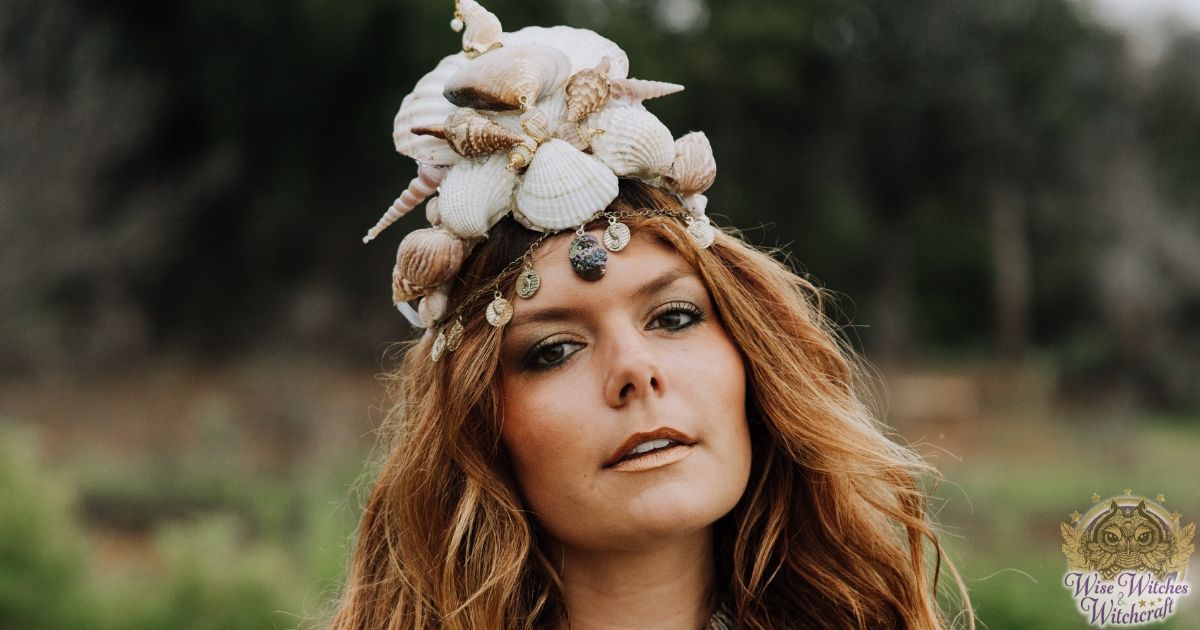
We touched on a brief definition of Wicca earlier in this piece. Here we will explore Wicca in greater detail. Now we can examine the differences between Wicca and Pagan practices. It will also give you a good understanding of what Wicca is and what its practitioners believe.
Let’s begin with the rule that all Wiccans are Pagans. That means they practice a religious system outside of mainstream Judeo-Christian religions. They might also incorporate many of the different types of pagan practices. A Wiccan’s tradition or choice will determine what kinds of pagan practices they embrace. For instance, nature worship is part of Wiccan practices. Some Wiccans might even consider themselves Gaianists as they revere the mother Earth. Some Wiccans are environmentalists. Some practice animism as they look to animals as teachers and guides.
Not all Witches are pagan. A Witch might be someone who practices occult magick. But, the practitioner does not adhere to any beliefs one might consider pagan. A witch can also be pagan without identifying as a Wiccan. Not all pagans are witches or Wiccans though.
A Wiccan might be polytheistic. Thus, they believe in worshipping more than one patron deity. Another Wiccan might choose one patron deity above all others. However, they do not deny the existence of other deities. There are solitary Wiccans and coven-attending Wiccans.
A Wiccan might be an eclectic practitioner too. Instead of drawing from one of the many Wiccan or Witchcraft traditions, they draw from many. For example, the practitioner might have a penchant for Egyptian magick and myth. But they might also work with Greek Gods and Goddesses if it suits a rite or spell right.
A Wiccan might be Autotheistic. he belief suggests the Divine is within them and outside of themselves. They might believe in Cartesian dualism. The principle suggests mental functions and the soul are distinct and separate things. A Wiccan might also see that deities are not entirely good or evil, so they might practice Dystheism. For instance, they might see Isis the Egyptian Goddess as a benevolent mother figure. At the same time, they might call on her darker aspect when in need of protection.
A peek at the above information shows Wiccans have many beliefs. A lot of the beliefs fall under the umbrella definition of paganism. One thing is clear, Wiccan beliefs are diverse. Categorizing all Wiccans into one lump category is hard. Some might enjoy adhering to Native American beliefs while adhering to Wiccan tenants. Some like working with herbs and holistic healing. Some like working magick. Now you know the difference between Wicca and Pagan. Now, let’s look at some other things Wiccans believe and follow.
Wiccan Witches and Their Practices
Wicca is a legally-recognized religion. The United States Army and the government recognize it. Gerald Gardner wrote “Witchcraft Today” in 1954. This was three years following the repeal of anti-witchcraft laws in England. Gardner and Doreen Valiente are major influences on Wicca’s development. Having its beginnings in the 1950s makes Wicca a neopagan practice. Still, many adherents draw its roots back to the practices of pre-Christian cultures.
There is no central authority to which Wiccans must answer. The teachings Wiccans follow stem from literature and oral traditions. The religion has evolved since Gardner released his book. There are now many denominations and sects. The groupings are witchcraft traditions. The traditions have organized structures.
[wisew_rectangle_large align=”right”]The fact there’s no central authority on Wicca makes it challenging to describe beliefs. There is no means for generalizing Wiccan beliefs. The Wiccan author, George Knowles, says it best. He explains the great diversity of the nature-based belief system.
“There are probably as many sets of Wiccan beliefs as there are Wiccans.” Here, the words paganism and Wicca have a lot in common. Paganism is a general term describing different religions. Wicca is a general term covering different religious traditions.
Some practitioners suggest anything deviating from British Traditional Wicca practices is not Wicca. The same goes for the teaching of Gerald Gardner. Thus, to some Witches, the newest traditions and eclectic practices are neo-pagan. But, the practices are not Wiccan.
Duotheism: The term Duotheistic is another pagan view. Here, the practitioner honors the Masculine and Feminine Divine. The belief consists of seeing a dual aspect in the Divine. The dual aspect one sees as the Goddess and her consort the God. Being duotheistic makes a Pagan Wiccan polytheistic. Why? Because there is a belief in more than one deity. But remember, some Pagan Wiccans consider themselves monotheistic. They view the God and Goddess as different aspects of one God.
The Masculine Divine
Wiccans often associate images of the Horned God with the masculine Divine. This divinity is one who rules the world of nature and animals. Some view the Horned God in twin brother aspects. The twins are the Holly King and the Oak King battle two times a year for positions of power at Winter and Summer Solstice. The Oak King rules during the time of growing sunlight from Yule to Midsummer. The Holly King wins the battle at Midsummer and rules from that moment until Yule.
Of course, this is one view of the many views of the masculine deity. The God is sometimes associated with the Wild Hunt, and other times he is a God of both Life and Death. The God is a solar deity, the Goddess’ consort, and is often a vegetation deity.
God is a masculine force. Wiccan see a correspondence between the Sun and the Masculine Divine. Some solar deities the practitioner might work with include Helios and Mithras.
The Feminine Divine
The Mother Goddess is often a fertility deity. Together the two deities are a lot like yin and yang energies in Taoism. The feminine divine corresponds with lunar energies. Thus, she is often seen as a Moon Goddess. Examples of some patron Goddesses include Selene, Luna, and Diana. The Goddess is sometimes understood through the lens of the Triple Goddess aspect.
Wiccan Views of the God and Goddess
Wiccan views can also prove henotheistic. In other words, Wiccans might see the aspects of the divine as multifaceted and varied. Some Wiccans see the Divine within a pantheistic context. The Divine is not a personalized patron deity, but an impersonal force. There are atheists and agnostic Wiccans as well. Here, the Gods and Goddesses are Jungian archetypes instead of deities.
[wisew_rectangle_large align=”left”]Per Gardner, the masculine and feminine Divine deities are parts of a greater Prime Mover. Some call the Divine the Supreme Deity. The view of Divine as many deities helps people understand the Divine abstraction. Thus, the deity is the Supreme Cosmic Power or the Cosmic Logos.
Some Wiccans view the deity without gender and as a single, androgynous Supreme deity. Others put extra focus on the feminine aspect of the Divine.
Sun and Moon Cycles: Wiccans celebrate eight seasonal-based holidays throughout the year. The Sabbats include Samhain, Yule, Imbolc, and Ostara. The remaining four Sabbats include Beltane, Midsummer, Lammas, and Fall Equinox.
The major Sabbats are also “Greater Sabbats.” Each holiday honors the movement of the Wheel of the Year. It allows the practitioner to attune to the seasonal changes of the Earth. As such, nature worship is part of the Wiccan belief system. Again, another pagan belief as part of the Wiccan belief system. Sabbats might include ritual works, but it is not a rule one has to follow.
Along with attuning to the Earth’s movement around the Sun, Wiccans also celebrate up to 13 esbats a year. The Esbats occur on a full moon and correspond with the Feminine Divine or Goddess. Some months have more than one full moon appearance. When the full moon occurs twice in a month, it’s a blue moon. All phases of the moon bear meaning when it comes to working magick. The waxing (first), full, (waning) and new moons are the phases the Wiccan Witch honors. Each moon phase is significant:
- Waxing: The phase of beginnings.
- Full: The full moon is the most powerful time for magickal work.
- Waning: The phase of endings.
- Blue Moons: The occasional second full moon in a month which is an ideal time for special rites or spells.
- New Moon: This is when the moon is dark in the sky. Many practitioners do not practice magick at this time. They honor the Divine and give gratitude for blessings instead.
[wisew_rectangle_large align=”right”]Wiccan Rede: Many Wiccans adhere to the principle of the Wiccan Rede: “An if it harm none, do what ye will.” This is not a law as Wicca is a non-dogmatic practice. Still, the Rede is something a practitioner aspires to fill. There have been debates that it is impossible to “harm none,” in a variety of situations. But, in understanding a Wiccan aspires to do their best to harm none, the argument becomes a moot point. It’s not whether the practitioner is successful every time. It’s the effort to live in reciprocity with everyone and everything that matters. Oh, and with the harm none adherence, there’s no sacrificing of animals or humans either!*
*It’s important to note that not every Wiccan accepts the Rede as a universal principle.
Principles: When it comes to the Thirteen Principles of Wiccan Belief, consider this. Not all Wiccans embrace them. In the early 1970s, an organization tried to document the basic tenets of Wiccan Beliefs. The organization is the “Council of American Witches.” The group got together in Minneapolis. This council was 73 members of the Wiccan community headed up by Carl Llewellyn Weschcke. The group is no longer together. But many Wiccans still follow the principles established. Here, we’ll explore the principles in brief.
- The first principle suggests Wiccans attune to the seasons and the cycles of the moon. Wiccans do this each day, but also through Sabbat and Esbat celebrations.
- The second principle suggests Wiccans take responsibility for the environment. To achieve this, Wiccans live in harmony and reciprocity with all of nature.
- The third principle suggests Wiccans do not see magick as supernatural. Psychic senses are also innate to all. Instead, they consider such things as something that is ordinary. Magick and the sixth senses are accessible to everyone.
- The fourth principle goes into how some Wiccans identify with the God/Goddess. It also explains how Wiccans see sex as a form of energy. It is “the embodiment of life,” and Wiccans value the act for its pleasure and energetic power.
- The fifth principle explains how some Wiccans view the inner and outer worlds. They see these realms as equal in importance. These worlds are the psychological and physical or mundane realms. They also see both realms as necessary and important for human fulfillment.
- The sixth principle explains how there’s no “authoritarian hierarchy” in Wicca. But, it also suggests honoring teachers, elders, and ancestors. Why? Because elders are kind enough to teach and share their knowledge with others.
- The seventh principle suggests that Wiccans see magick, religion and wise living united. It is the Wiccan Way or philosophy of life Wiccans call the Craft.
- The eighth principle explains the title “Witch” does not have power as it doesn’t make a person a witch. Heredity connections to Witches also have no power to make a person a witch. This principle explains how initiations, degrees, and titles do not make a witch.
- The ninth principle explains how some Wiccans aim to live the best life possible. They do this by continuing to evolve and develop their consciousness. At the same time, Wiccans promise to recognize the role they have in the larger tapestry of the Universe.
- The tenth principle explains that we have one animosity toward the Christian teachings. This issue is that those who share or spread the faith Christianity consider it the religion of the “one true God.” Wiccans disapprove of those who seek to oppress or deny religious freedom for all.
- The eleventh principle suggests Witches spend time focusing on the present and future. They do not want to debate the historical roots of craft terms, its legitimacy, or its history.
- The twelfth principle explains how some Wiccans do not believe in a being that is entirely evil. The Devil is a Christian construct. It also suggests Wiccans do not seek to hurt others. They do not conduct evil acts for personal gain.
- The final principle suggests Wiccans seek healing resources from the natural world.
[wisew_rectangle_large align=”left”]No Sir, No Satan Here! Wiccans do not believe in a devil responsible for all the evil on Earth. The devil stems from Christian understandings. Many Wiccans understand evil exists. But, they do not consider a single being responsible for it. The image of the Devil may have some imagery drawn from pagan sources.
This might stem back to when Christians merged pagan beliefs into Christian teachings. It made the conversion easier. Some imagery stemming from pagan myth may be the horns and animal or goat-like legs. The imagery is reminiscent of the God Pan of the Woodlands in Greek myth. The pitchfork is much like the god Poseidon’s Triton too. Wiccans do not worship the devil.
Gender Equality: Many Wiccans see sexual polarities in all nature. For instance, the Earth is feminine, while the Sun (or Sky is masculine). The Moon is feminine while the Sun is masculine. Thus, Wiccan practices seek to allow for the same gender equality within covens. But, despite gender equality emphasis, there are often fewer males in existing covens. Please note that gender equality is not something occurring in all covens. Some covens are all female and revere a goddess only.
Sexuality: Wiccans see no shame in sexuality and sex. Of course, it must be something occurring between consenting adults. There are homosexual, bisexual, and heterosexual practitioners. Wiccans do not judge others based on their sexual orientation. There is no shame attached to nudity either. Some covens practice ritual while skyclad (meaning absent of clothing). It is a sign of being free from dogmatic religions which teach sex is sinful.
Life After Death Views: Some Wiccans believe in a place called the Summerlands. It is equal to paradise. Beliefs include the chance to see ancestors in the Summerlands. It is a place where one reviews their past life and plans the next incarnation on earth. After myriad manifestations, we move onto the next level in our spiritual journey.
The question of what goes on after death is personal to every Wiccan and Pagan. The levels beyond reincarnation are where we merge with the Divine. Some Wiccans believe that we are all expressions of the Divine in the physical. Every experience we have is something the Universe ends up learning from as we experience it.
[wisew_rectangle_large align=”right”]The Pentacle: Many Wiccans wear a pentacle as a form of protection from negativity. The symbol is a star with one point up enclosed in a circle. It has many meanings including birth, life, death, and rebirth. It aligns with the four cardinal directions, elements and signifies magick. The pentacle has nothing to do with the devil or the worship of an evil being. The star is of silver metal (Please note: not always). Silver is “witches’ metal.” Witches revere it for its protective properties.
For more information on the Pentacle, Pentagram, and Pagan symbols, check out the article “Pagan Symbols and Meanings,” here on Wise Witches and Witchcraft. You can then follow up the piece with information on symbols within the context of Wiccan practices. Check out: “Wiccan Symbols – The Ultimate Guide.”
Autonomous Religion: Wicca is an autonomous religious practice. A solitary practitioner answers to no one but themselves and their conscience. There are no firm rules or commandments. Wiccans decide the principles they follow. But, many Wiccans adhere to the Rede and guidelines from the Principles of Belief. The principles are guidelines serving as a means of describing the general ideas of the Wiccan community.
In a coven, there will be a hierarchy (in most covens). The coven leaders include the High Priestess and High Priest (if applicable). There may be an inner court consisting of priests and priestesses as well. The inner court might help structure the coven guidelines. The priests and priestesses are often available for consultations. Some even educate other Wiccans seeking to learn.
The outer court of a coven includes those who are new members who have yet to dedicate to the craft. The outer court also consists of the dedicate. Dedication lasts about a year and a day. The dedicate can then initiate and move up to the next level of study and practice. The next level up is often achieved through initiation. Some covens have degrees or levels of learning and mastery.
With the lack of authority, covens govern themselves. A coven governing itself seems contradictory to autonomy. But, some organization and rules are necessary for group balance. It also ensures the group can remain focused on spiritual goals. At the same time, there’s a sense of order and organization.
Free Will: A major belief in Wicca is that everyone has free will. This does not give the practitioner carte blanche to do whatever they desire. Instead, Wiccans unite free will with the concept of personal responsibility. When a solitary practitioner, a person relies on free will to choose the direction of one’s path.
[wisew_rectangle_large align=”right”]Within a coven, the practitioner uses free will to decide to participate. At the same time, the free will has its limits. A practitioner must adhere to the regulations a coven establishes. This does not disempower the practitioner as the individual has the choice to work within a coven or not.
The free will of another is something many Wiccans respect. They do not seek to impose their will on others. This fact is important when considering magickal workings and healings. Many Wiccans feel love spells that aim at specific individuals is an act hindering a person’s free will.
Magick: Wiccans believe in and use magick during rites and spell work. Some describe the art as using the “un-manifest” to influence the manifest. Anything one conceives, thinks of, perceives, or is tangible, one manifests. The power behind magick comes from the place where everything stems. Some Wiccans see magick as a power that comes from within. Per the occultist Aleister Crowley, the definition of magick differs from “magic.” Magick is the Science and Art of causing Change to occur in conformity with Will.” Crowley also suggests when someone follows through with the intention, it is magick.
Many Wiccans assert that black magick and white magick are erroneous descriptions. Instead, magick is neutral. One’s intentions shade the outcome of magick. Positive magick gains positive results. Negative magick results in negativity.
Conclusion: Pagan is a Broad Term
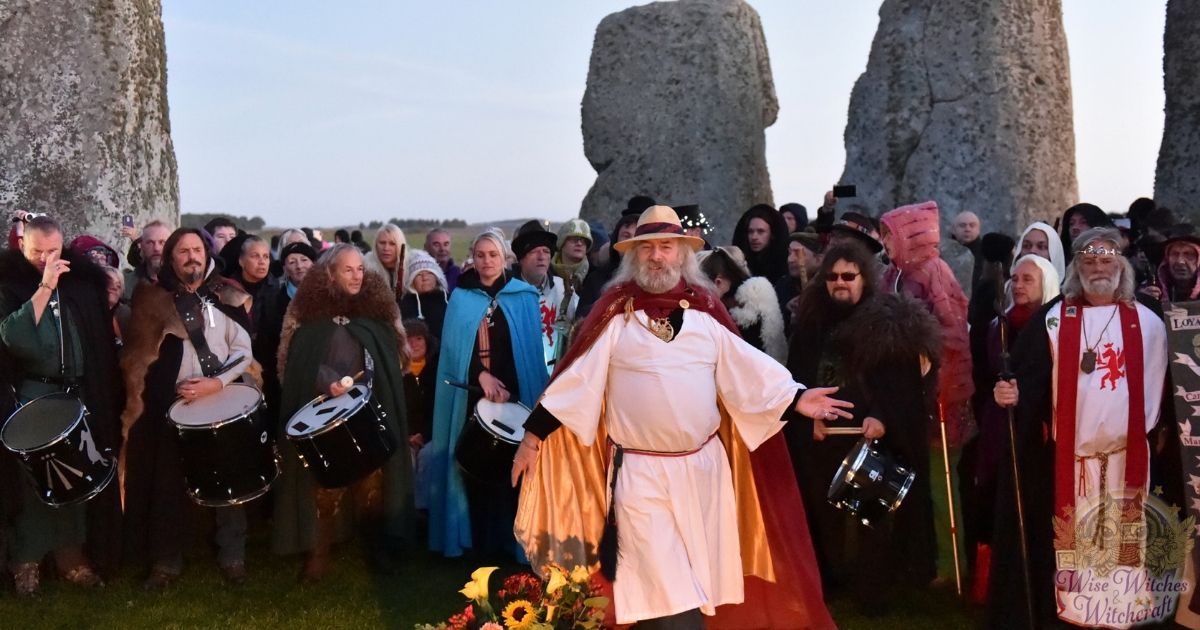
So, how’s that for examining the difference between Wicca and Pagan practices? After exploring a wealth of information, you can see the evolution of word meanings. You can also see how that evolution influences the various meaning of words. There’s a long history behind words like pagan, paganism, and Wicca today. We can boil the differences between Wicca and Pagan practices down into simple terms.
It’s simple enough to say that Wicca is one of many forms of paganism. But, it doesn’t define every pagan. Many pagan beliefs fall within the practice of Wicca. In the end, Wicca and Paganism have a couple of things in common. They are two umbrella terms embracing an array of beliefs under one definition. Wicca and Paganism are two things that you cannot understand if generalized.
That’s why here at Wise Witches and Witchcraft? we’ve taken the time to explore the evolution of both terms for you! Believe me, there’s plenty more where that comes from too! Feel free to check out all the information here so you can grow and learn on your spiritual path. Also feel free to check out our sister sites, Building Beautiful Souls and What Is My Spirit Animal? You’ll find loads of free information you can learn to explore and understand your spirit’s destiny!

